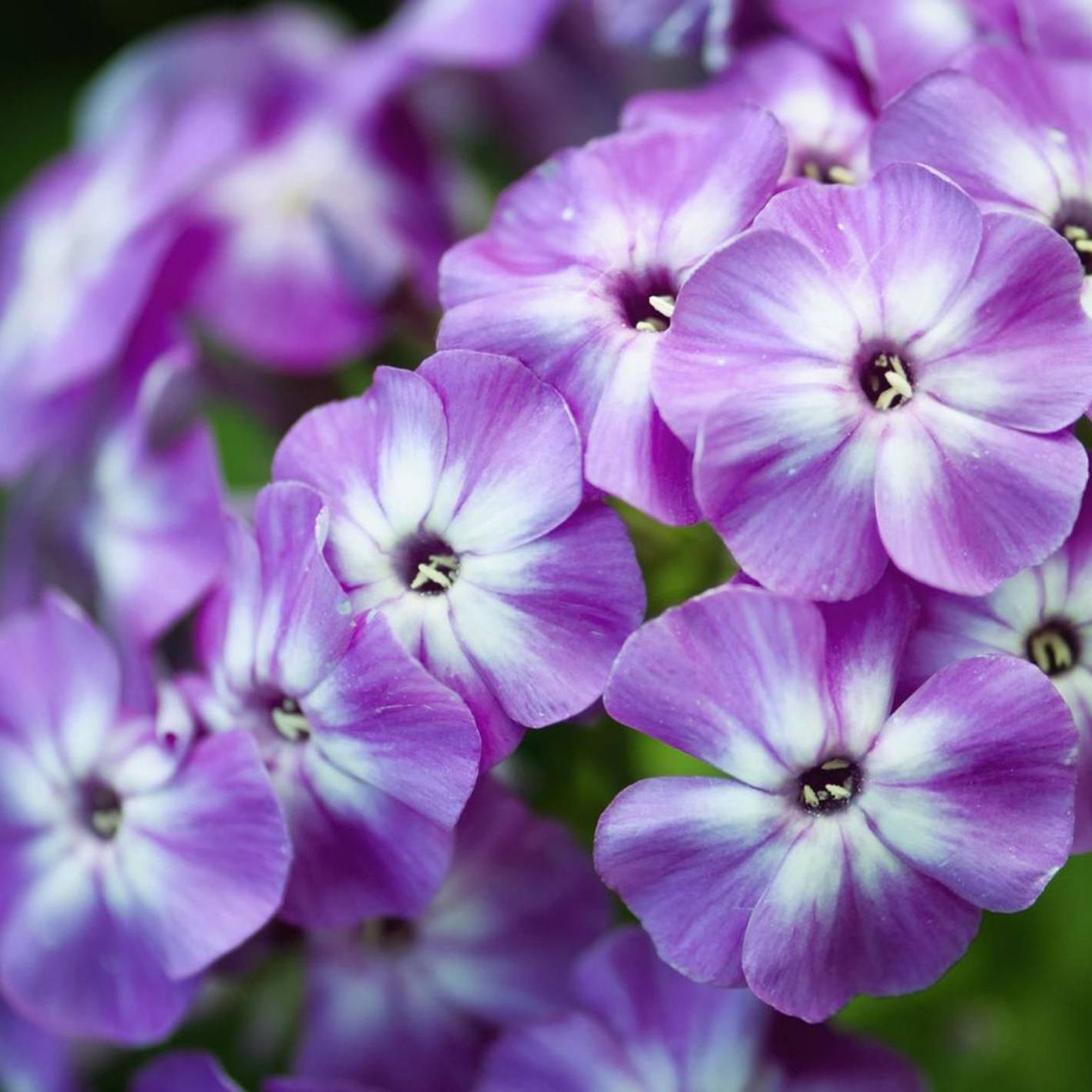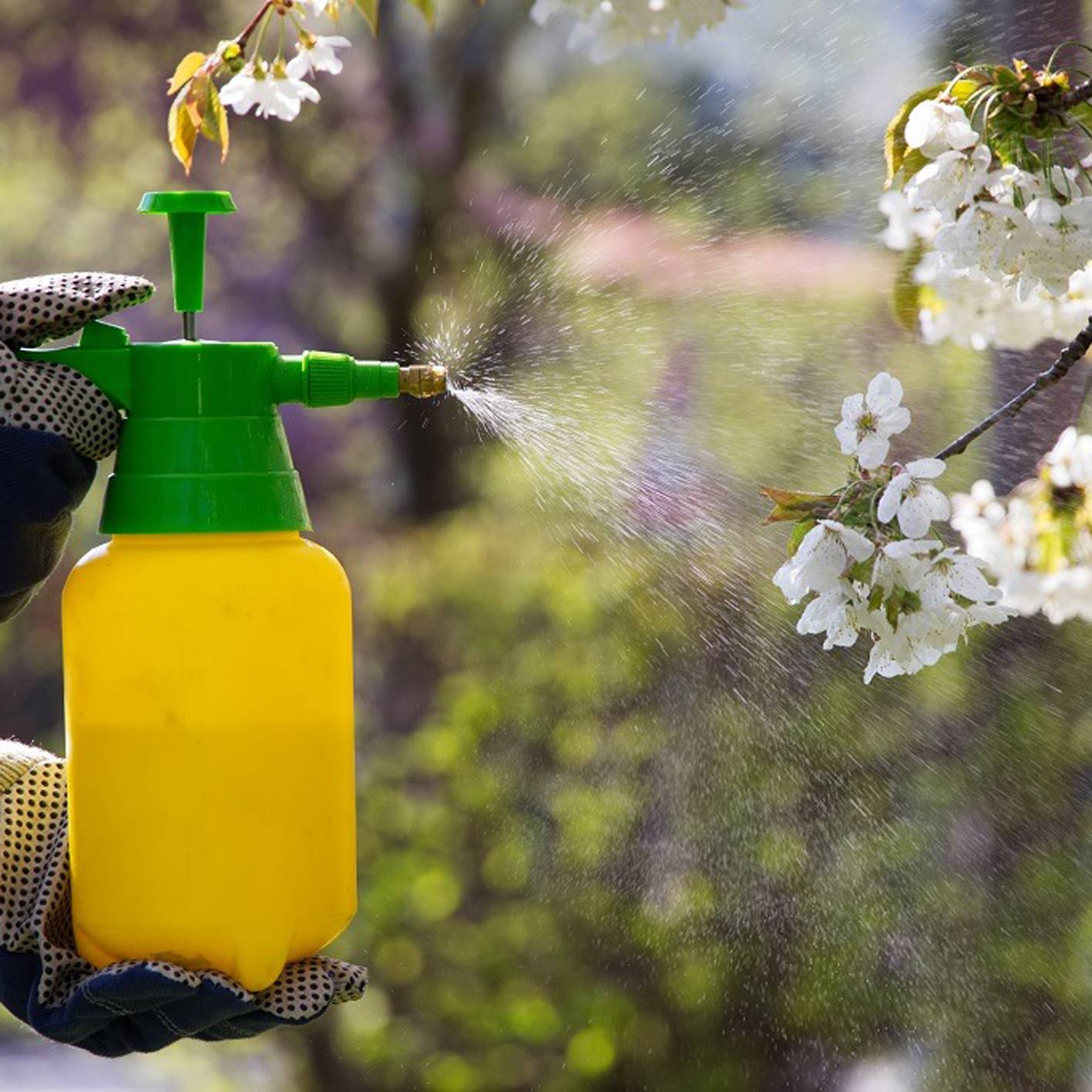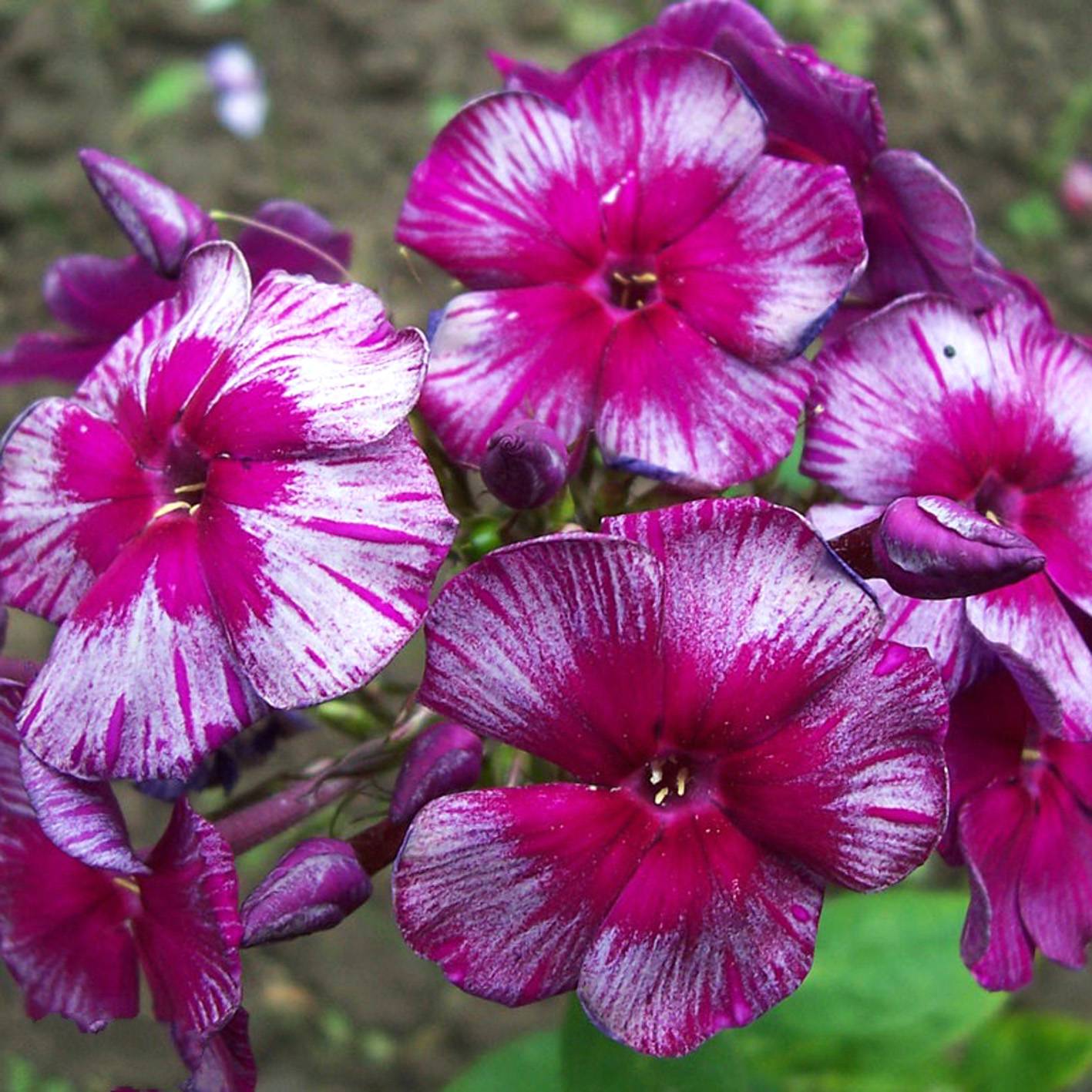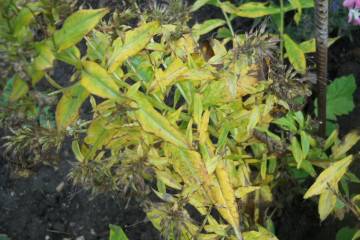Powdery mildew on phlox: how to get rid
Content:
Powdery mildew is a common disease among phlox. The causative agent is a fungus - a parasite that manifests itself as a white bloom on the leaves. If detected, action is taken immediately. Another type of pest, "downy mildew", poses a great danger. Its appearance is provoked by oomycetes - small organisms. This can lead to the death of an entire plantation. Phloxes are no exception. Often this particular flower suffers from such an ailment. This article will help you figure out where the white plaque on phlox comes from, and how to treat it.
The causes and features of the manifestation of the disease
The most common pathogens are the following types of bacteria:
- sphaerotheca;
- erysiphe;
- uncinula.
Unpleasant plaque spoils the appearance of the plant and harms its owner. Distribution zone - green leaves, less often - flowers. The mycelium of the fungus penetrates deep into the cells and spreads throughout the territory, infecting everything around. The white layer covering the surface resembles flour. Diseased leaves are not involved in photosynthesis.
The disease usually starts in the lower leaves. Further rising up, it attacks the upper part of the flower. Favorable conditions for the development of bacteria are high humidity and a temperature of +20 degrees.
The peak of the disease occurs in late spring or early autumn. Within 5 days, the flower can turn completely white.
The reasons
The causes of infection can be:
- weak immunity;
- over-planted soil;
- weeds;
- infected plants nearby.
Powdery mildew is a frequent visitor to those gardens where agricultural practices are violated. Too dense plantings, not renewed and aging bushes, suffer from a lack of nutrients. Overfed phloxes are also susceptible to infection. Rainy weather, high air humidity and evaporation contribute to the development of the disease. Phlox can be covered with linen in summer, with excessive watering.
Signs of powdery mildew damage
This fungal disease is common among phlox. It is popularly called ashes or linen. The infection often spreads downwind. Sucking pests - thrips, mealy worm, whitefly - are vectors. The fungus can get on the flower with contaminated water or through the hands.
Signs of illness:
- white bloom on leaves, stem and flower;
- drying and curling petals;
- the death of a plant as a whole or its individual parts.
Powdery mildew on phlox: how to get rid
The best way to cure a plant from a disease is timely prevention:
- Bite soil is regularly sprinkled with wood ash.
- During the growing season, the flower is fed. Fertilizers should include nutrients and vitamins. It is important to respect the dosage. With an excess of nitrogen, the vegetative mass increases and leads to a rapid growth of powdery mildew.
- Spray and rinse the infected area with fungicides.
- Remove dead parts.
Various means can be used in the treatment. They are sold in specialized stores.
For some time, antibiotics have been used in horticulture. This therapy brings good results:
- terramycin 100 units / ml;
- penicillin 100 U / ml;
- streptomycin 250 U / ml.
Spray the leaves with a diluted solution in a ratio of 1: 1. Antibiotics negatively affect not only the parasite, but also the health of phloxes.
Powdery mildew can also be defeated by pesticides and folk remedies.
Pesticides
Pesticides are a common treatment for powdery mildew. They are resorted to in case the above methods and means did not work.
Colloidal sulfur solution (0.5-1%) - a chemical aimed at controlling pests and bacteria. When using it, be sure to read the instructions and apply the specified ratio in the fight against parasites.
Analogues:
- Speed;
- Tiovil;
- Fundazol;
- Topaz;
- Bayleton;
- Topsin;
- Vitriol.
Folk recipes for powdery mildew control
In the struggle, folk remedies are also actively used. You can make them yourself:
- Garlic. Cut 50 g of garlic cloves with a knife and crush. Pour water (2 l) and let it brew for a day. With the resulting solution, wipe the leaves affected by powdery mildew.
- From the mullein. In a ratio of 1: 3 - pour cow manure with water (where water - 3, manure - 1). Leave in the sun for 3 days and drain. Dilute the solution again with water in proportions 1: 1 and spray with phlox.
- From ash. Stir 1 kg of ash in 10 liters of warm water. Insist for 7 days and pour into a clean container without sediment. This means the infected areas are sprayed.
- From rotten grass. In the process, any grasses and weeds are used, twisted and covered with hot water. Leave for 5 days and use in the fight against diseases and pests. The color of the infusion should turn out to be copper.
- Horsetail. Pour 150 g of dry product with 10 liters of water and leave overnight. Then boil for 30 minutes. Cool the broth and strain. Dilute 1: 5 with water. Treatment with such a solution is carried out 2 times a week over the entire surface of the phlox.
- Lactic acid bacteria. Sour milk or sour milk diluted with water is taken as a basis. An excellent remedy in the fight against powdery mildew.
Advice from summer residents and gardeners
If agrotechnical recommendations are followed, powdery mildew will cease to be a problem and will no longer plague flowering plants. If a white bloom appears on the leaves of phlox, experienced gardeners know what to do.
Here are the most common guidelines:
- When choosing a plant, choose a resistant variety.
- Follow the recommended planting patterns.
- Choose the best place for growing phlox.
- Timely pest control.
- Water in moderation.
- Inspect the plant regularly for pests.
- Remove infected areas if they cannot be recovered.
Sulfur, boric acid and manganese solution should always be present in the gardener's first aid kit. Knowing ways to combat powdery mildew, you can preserve the health of not only phlox, but also other crops growing nearby.
Prevention of diseases and pests of phlox
Unpretentious phlox to the taste of fungal organisms. Most often, downy mildew affects plants.
For prevention, the following actions are used:
- Pollinated with sulfur 3 times a month. For this, a little sulfur is poured into a gauze bag and sprayed dry.
- At the end of May, they are treated with 1% soda solution - once a week.
- Poured with a solution of manganese and boric acid.
It is worth remembering the correct landing site. The soil must provide the plant with the necessary substances. Roots need a lot of free space.An excess of nitrogen for phlox is harmful. But, as for potassium and phosphorus, they are excellent at fighting mycoses and act as additional sources of nutrition.
If you find a white coating, do not wipe it off. This can damage the flower. If you process flowers several times in the summer season, then powdery mildew will bypass the garden.


















